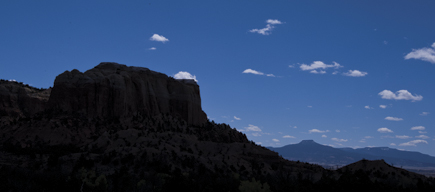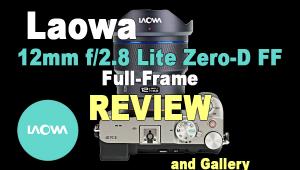Nikon’s AF-S Nikkor 16-35mm f/4G ED VR Zoom; Ultra-Wide For FX, Moderate Wide For DX Nikon D-SLRs
When you talk about lenses these days you always have to bring in the multiplication factor, especially when you have a lens that fits comfortably on both so-called full-frame and APS-C sensor cameras. To know what angles of view you will have available you have to know: (a) that the lens is made for full-sized sensors (or not) so will work with the multiplication factor on smaller sized sensors (of course the APS-C lenses will not work on the larger sensor cameras unless you are working with a “Crop mode”) and (b) that your camera is indeed a full or smaller sensor sized unit. The logic of buying the so-called full-frame capable lens is that it will fit on any camera with the same mount you buy now or in the future; the logic of getting a lens capable only of covering the smaller sensor is that you match a lens to the gear you have now for a lower price, given all else is equal. So many considerations, so little time.
 |
The new Nikon 16-35mm (list price: $1259.95) covers the larger sensor variety, meaning that you get a true 16-35mm equivalent angle of view with FX cameras like the D3S and D700 and about 24-70mm on DX-format Nikons, or if you should choose DX Crop mode on the full-sized sensor units. Either way it’s an excellent wide-angle lens, and it wasn’t that far back when digital and extra wide angle simply didn’t play together nicely. Vignetting problems caused by the angle of the light hitting the sensor from the super-wides were endemic. Full frame helped this, as did new micro lenses that helped direct the rays to a more perpendicular angle when hitting the sensor. None of that, at least on the D700 I used for this test, is a problem anymore.
|
35mm Range
|
|
 |
|
|
|
HDR
|
|
 |
|
|
This is clearly a lens for pros and serious enthusiasts, given the price, but the specs tell you why. Built with 17 elements in 12 groups, there are two ED, three aspherical, and some Nano Crystal Coat-deposited elements as well. In addition, there’s Internal Focusing and Nikon’s Silent Wave Motor, which lives up to its billing in speed and noise-free operation.
Being a VR (Vibration Reduction) lens, you can get a steady shot quite a bit slower than normal, hand-holdable speed. Nikon claims a quantifiable four-stop range benefit, but four stops from what is always the question. If you use the 1/focal length standard formula without VR that would be about 1⁄50 sec for use on FX cameras and about 1⁄100 sec for DX cameras or mode, just to be safe. So, let’s say with VR off your exposure at ISO 200 is 1⁄8 sec at maximum aperture. Turn on VR and you theoretically can get f/11 at 1⁄15 sec or f/8 at 1⁄30 sec or, the safe zone, 1⁄60 sec at f/5.6. With a super-wide setting, f/5.6 can get you a decent depth of field; at 35mm it’s a “normal” focal length in my book. Would we be better off with a faster max aperture? You bet, but VR in this lens allows us to have an exciting focal-length ratio without having a huge piece of glass and without breaking the bank.
|
Super-Wide
|
||
 |
 |
|
|
||

















































